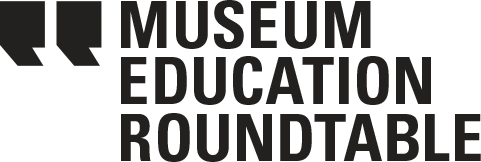Conversations about Equity
I had the privilege of attending the 2019 Museum Association of New York Annual Conference (MANY), Identity and Access, in Cooperstown, NY earlier this month. While I—like many museum professionals—love conferences, I was especially excited for MANY 2019, as it was my first time leading a session. On the second day, I led a lunch roundtable discussion called “DEIA Statements: Where to Begin, How to Proceed, Challenges to Tackle” and had a robust and interesting conversation with colleagues from across the state. DEAI stands for “diversity, equity, accessibility, and inclusion,” and many organizations have written these in order to better frame their values, practices, and community building.
I chose this topic for two reasons:
1. I serve on the Equity Task Force on the Museum Education Roundtable (MER) Board of Directors. This group has worked since August 2018 to address DEAI issues within our Board, readership, membership, and journalistic endeavors; this work has generated, among other things, an equity statement.
2. I serve as Programs Coordinator at Frank Lloyd Wright’s Martin House in Buffalo, NY. After I joined the MER Equity Task Force, I felt that there was space at the Martin House for similar conversations to happen.
Working concurrently on these two projects has allowed me to see the variety of ways DEAI statements can be crafted and integrated into an organization’s current framework. During the lunchtime discussion, two themes emerged: Institutional relevance and community buy-in.
Institutional Relevance
Staff from all types and sizes of organization shared their concerns and struggles during lunch. What I quickly realized is that in order to create DEAI statements that will be meaningful, it is essential to consider who makes up your constituency and what kinds of messages will resonate with them. Ask yourself and those around you the hard questions about what your local community looks like, what their struggles are, and what kinds of things you provide to them. Then ask yourselves how those answers fit into the broader definitions of DEAI (a great place to look for museum-centric definitions is the AAM Facing Change report). For example, a museum professional from a small town institution noted that political differences were often at the heart of their community’s disagreements. Participants recommended that those staff members might specifically address how a museum can bring together disparate communities in their equity statement and/or task force action steps.
Staff Buy-In
Another participant noted that their institution, while racially diverse, was struggling to get staff buy-in about institutionalizing DEAI principles. The idea that a museum is “visually diverse” often overshadows the non-visual issues that might be addressed by a DEAI statement. For example, staff might have a racially diverse staff but their procedures in regards to those with disabilities might need updating.
At the table, we agreed that these values are a part of everyone’s museum practice, but often that message is lost once a statement is created and put on a shelf. Conversants noted how equity statements are just the first step for DEAI initiatives in museums. In order to both create and maintain relevance, staff must be brought in to the conversation about how these values directly impact their work. Creating a task force from institutional stakeholders (whether that be staff from different departments, volunteers, and/or Board members) will keep opinions diverse and ideas flowing. Further, having that task force meet regularly to check up and keep action items on the table will further help staff to see the importance of DEAI in their work.
DEAI work is difficult, but it is vital to institutions that want both internal and external communities to know that these issues are foundational to their work. Any organization looking to begin this journey shouldn’t hesitate, but instead dive in and tackle this as best they can. This is ongoing work, and the best way to start is just to start!
Taylor Jeromos is the Programs Coordinator at Frank Lloyd Wright’s Martin House in Buffalo, NY and serves on the Board of Directors for the Museum Education Roundtable.

